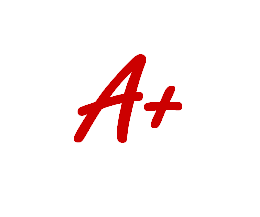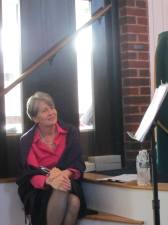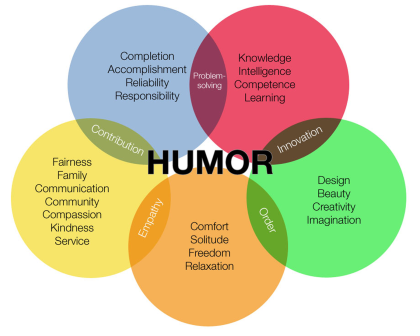Archive
The Power of a Systems Perspective
 In Warren Berger’s book, A More Beautiful Question, he recalls an anecdote from education pioneer Deborah Meier that stopped me in my tracks when I read it:
In Warren Berger’s book, A More Beautiful Question, he recalls an anecdote from education pioneer Deborah Meier that stopped me in my tracks when I read it:
“We had one of those world maps with the U.S. right in the middle—remember those? And one of the students looked at it and said, ‘How come the East Indies are in the west?’ And that question got me thinking about the impact of what you put in the center and what it does to everything else.”
I love this story because it so nicely illustrates the value of what my partners and I call “coaching from a systems perspective.” Like a good coach with a provocative question, this little girl created an opening for Meier to talk with her students about their place in a larger system and the perspective they were holding about that. Meier changed the curriculum as a result of this inquiry because “it had so many implications for how you see yourself.”
This is exactly the kind of opening we try to create with leaders who are grappling with the challenges of effecting sustainable change for themselves and their organizations. We find that it is often new insight about the vantage point from which they’re viewing a complex systems environment—and their ability to try on other vantage points—that allows them to break through to new ways of thinking and acting.
One tool we use to get a fix on what our coaching client has put in the center of her awareness, and what that “does to everything else,” is the Butterfly Framework of Complex Human Systems. Like Meier’s world map, this framework allows us to step back and ask, “Where in this landscape of internal and external systemic forces is our client’s awareness focused? What would be possible if she shifted her awareness to another part of the system?”
Having just returned from the SoL Global Forum in Paris, where I had the pleasure of presenting a workshop on the Butterfly Framework, I can report that there is a vibrant international community of coaches and consultants who understand the evolutionary importance of greater systems awareness. Colleagues from no fewer than fifteen countries shared stories with me about how they are catalyzing transformation by helping their clients ask more beautiful questions and better see the systems they are and the systems they’re in.
What question, if you asked it right now, would move you to a new perspective?
Makers: Choosing to Change the Story
We all have experienced a time when that sentence felt immutably true. Most of us have said it out loud more than once. But, the longer I think about it, the more I come to see that we almost always have a choice. It’s just that some choices are tougher than others because they seem to conflict with the story we believe we’re living.
As I watched Makers on PBS, an assertively present-tense celebration of trailblazing American women, it occurred to me that the phrase “pro-choice” can be seen as much more than a label describing someone’s position on reproductive rights. For the women featured in this film, pro-choice is a way of being; a way of saying, “We are willing to take bold action, even when it’s uncomfortable or scary, to challenge the prevailing norms in this story we’re living together.”
And the word “we” is important there.
In Sheena Iyengar’s brilliant research on how our feelings about choice are shaped by culture, she examines how Americans’ insistence on the primacy of individual choice is not always as liberating or effective as we might think. She suggests we might benefit by borrowing a little perspective from cultures in which it’s understood that, “when two or more individuals see their choices and their outcomes as intimately connected, then they may amplify each other’s success by turning choosing into a collective act.”
Therein lies the power of the women’s movement in America. Paradoxically, the individual choices that these (sometimes accidental) activists make are rooted in a fundamental value of interdependency. Rather than settle for constraints on individual choice imposed by hierarchical power structures that diminish us, they choose to change the story to one of greater equilibrium.
As Gloria Steinem observed in an interview on the PBS NewsHour, “This is transformation we’re talking about; to get to societies in which, as we once were, we are linked, not ranked; in which the paradigm of culture is the circle, not the pyramid.”
Is there an “I have no choice” experience in your life that you can courageously transform into a “we have a choice” moment?
Go First
A leader is best when people barely know he exists, when his work is done, his aim fulfilled, they will say: we did it ourselves. — Lao Tzu
 This inspiring thought from Lao Tzu is often quoted, and I think, is often true. A leader succeeds best when her followers have adopted her vision as their own; embracing it so fully they don’t even recognize that it came from outside them.
This inspiring thought from Lao Tzu is often quoted, and I think, is often true. A leader succeeds best when her followers have adopted her vision as their own; embracing it so fully they don’t even recognize that it came from outside them.
It’s also true, though, that sometimes a leader has to be visible in her willingness to go first, literally to lead—and I am not only referring to “hero leaders” in positions of formal authority. Each of us, from time to time, has the option to go first from the middle of the pack. When all the other leaves are green, one leaf has to say, “Well, it’s time to turn orange now.”
“But,” you may object, “I don’t want to be the first leaf to turn. That leaf is dying!” Yes, it’s dying, and leadership often involves a kind of dying. We have to acknowledge the death of the system or the process or the product or the relationship that until now was the way we knew. We have to trust in the rightness of what’s next. (I’m aware, by the way, that leaves don’t actually have a choice in the matter…but you get my point.)
We go first when we become aware of something that the others aren’t aware of yet, when we get unhooked from something that is still getting in the others’ way, when we love the others enough to take the risk.
Where is your opportunity to go first right now?
Bring Your A Game
The final rounds of last month’s US Open tennis tournament were beset with some of the windiest conditions in the history of the event. From the commentators’ booth, John McEnroe observed, “Every player’s worst nightmare is to play in wind like this. It’s basically impossible to play your ‘A’ game.”
 How do you get up for those moments when you need to bring your ‘A’ game, but conditions (external or internal) are working against you? The wind is howling, your energy is flat, or your fear of failure is creating static that interferes with your performance? Without your ‘A’ game, you can wake up all of a sudden in the car on the way home and the opportunity has passed you by. You might experience this as an indictment of your whole self-worth: I AM SUCH A LOSER! No, let’s not go that far…but it’s true that somehow, in this particular moment, you weren’t able to be who you wanted to be when the stakes were high. You know you can do better.
How do you get up for those moments when you need to bring your ‘A’ game, but conditions (external or internal) are working against you? The wind is howling, your energy is flat, or your fear of failure is creating static that interferes with your performance? Without your ‘A’ game, you can wake up all of a sudden in the car on the way home and the opportunity has passed you by. You might experience this as an indictment of your whole self-worth: I AM SUCH A LOSER! No, let’s not go that far…but it’s true that somehow, in this particular moment, you weren’t able to be who you wanted to be when the stakes were high. You know you can do better.
To improve your chances of rising to the occasion with confidence and clarity when the stakes seem high, start by writing a big ‘A’ on a small piece of paper and keep it in your pocket or your purse in the days leading up to your big event. Use the following questions to bring a clear vision of success into sharp focus so that by the time your event arrives you’re not inventing your success in the moment, but simply following through on the ‘A’ game scenario that you have played out in your mind.
A is for Aspiration: How does this event relate to your biggest vision for success in your life? What do you want to take away from the experience? Reminding yourself why this opportunity means so much to you can energize you by connecting you to a sense of purpose. When you know what you want to get out of it, you can appropriately scale and shape the positive energy you want to put into it.
A is for Awareness: Big moments can expand in our awareness until they engulf us, making us feel small by comparison. One way to respond to this is to move your awareness outside yourself and take in the bigger picture. What’s at stake for the other people in the moment? Is it a big moment for them? How do you want to invite them to participate? What are you co-creating energetically together? What happens to your energy when you see this as a collective experience instead of one that depends entirely upon you?
A is for Attitude: There’s a reason why this feels so big. You can think about it as the degree of difficulty. When a diver walks up to the end of the diving board and executes a simple swan dive, there probably isn’t a lot of challenge attached to it. But try doing a pike with 2.5 somersaults and 2.5 twists from a 10 meter platform, and you’re due to earn some serious points if you nail it. So, first of all, give yourself a preliminary pat on the back for even trying something this big. Go you! And second, recognize how much impact your attitude has on your results. What does it feel like to dread this event? What does it feel like to anticipate it with eagerness and curiosity? What attitude will serve you best in bringing and executing on your ‘A’ game? That’s the one. Be that.
Score and Performance
 I had the good fortune recently to visit the Ansel Adams: At the Water’s Edge exhibition at the Peabody Essex Museum in Salem, MA. In addition to being moved by the majesty and poignancy of the images presented, I enjoyed learning more about this pioneering artist’s approach to his medium. The wall text for the exhibit, coordinated by the museum’s curator of photography, Phillip Prodger, provides lots of meaningful context.
I had the good fortune recently to visit the Ansel Adams: At the Water’s Edge exhibition at the Peabody Essex Museum in Salem, MA. In addition to being moved by the majesty and poignancy of the images presented, I enjoyed learning more about this pioneering artist’s approach to his medium. The wall text for the exhibit, coordinated by the museum’s curator of photography, Phillip Prodger, provides lots of meaningful context.
One particularly interesting note accompanied the large print of The Tetons and the Snake River from 1942:
“Adams famously likened negative and print to the score and performance in music. Because the negative contains all the information necessary to make a picture, he considered that the “score” of a photograph. And because printing in the darkroom requires interpretation that can vary according to the attitude of the printer, he considered that the “performance.” According to this idea, Adams changed the way he printed many of his negatives over time.”
Now, unless you’re a Photoshop user, you might not do much interpreting of your pictures these days; it’s so convenient to set your digital camera to automatic and let it do its thing. But this idea of score and performance struck me as relevant to something bigger than photography. I think it’s a nice way to think about the human capacity for change.
We all have the “negatives” we’re printed from: The inherited traits encoded into our DNA, the family systems we grew up in, our MBTI profiles and zodiac signs. But isn’t there an equal measure of “performance” that accounts for who we are? It seems to me that our ability to vary our interpretation of the encoded Self over time is what aspiration and choice are all about.
What attitude are you bringing to the darkroom lately?
Braving the Discomfort Zone
 One person’s fear is another person’s fun, right? A friend of mine is totally unfazed by donning 50 pounds of scuba diving gear and breathing apparatus to plunge into 75 or 100 feet of water, but when she is faced with the prospect of walking into a room full of strangers her heart races, her breath gets shallow, her palms sweat.
One person’s fear is another person’s fun, right? A friend of mine is totally unfazed by donning 50 pounds of scuba diving gear and breathing apparatus to plunge into 75 or 100 feet of water, but when she is faced with the prospect of walking into a room full of strangers her heart races, her breath gets shallow, her palms sweat.
For me, singing in front of an audience can drive my anxiety up to acute levels. What sets off your fight or flight alarms? Regardless of what your particular challenge looks like, the fact that it feels risky is a solid clue to tell you that there might be something of substance for you to learn from it.
Oh, sure, we might wish to hang out endlessly in our comfort zones, those cozy, familiar, not too challenging places where we feel safe and self-assured.
Or we might crave more time in the flow zone that psychologist Mihaly Csikszentmihalyi has identified as the state in which people experience their greatest capacity for happiness and creativity. When you are absorbed in a “flow experience” he says, “…your sense of time disappears, you forget yourself, you feel part of something larger. And once the conditions are present, what you are doing becomes worth doing for its own sake.”
These two inner-directed zones are absolutely vital to a balanced, joyful, healthy life, representing a spectrum of unconscious feeling that ranges from serenity to ecstasy. But even if we could choose to spend all of our time there, we’d be cheating ourselves out of something critical, wouldn’t we?
Just as important is that discomfort zone in which we get conscious about what scares us and what matters to us most. It’s there that we identify the gaps in our life and define our opportunities for growth and understanding. In short, it’s there that we learn.
It’s only in the discomfort zone that you can gather valuable data by asking, “What makes this experience so difficult for me? What would it take to convert these feelings of vulnerability, inadequacy, stupidity, frustration, or uncertainty into feelings of comfort and flow?” Your discomfort zone is a practice field where you can acknowledge and challenge your biggest fears and declare your intention to disarm them in pursuit of what you really care about.
When you choose to enter the discomfort zone with intention and curiosity—walking into that room full of strangers, standing up there to sing—you build your muscles for navigating this challenging zone the next time you find yourself there unexpectedly. Will you give it a try?
New Leaves, Same Roots
 What do you promise not to change this year?
What do you promise not to change this year?
No, I’m not trying to talk you out of your courageous commitment to new behaviors. As a matter of fact, I’m trying to help you. I want to see you eat better, exercise more, improve your listening skills, find time for reflection, stop driving like you’re the only important person on the road, etc. I totally support your intention to change!
And that’s why I’m asking you what you want to conserve.
Behavioral change can only stick if it’s intrinsically motivated—when we say, “I want to,” or “this matters to me,” rather than, “I should.”
Naming what matters to you will help you illuminate what you want to conserve—those core values that sustain your resolve to change. My intention to savor my food honors my values of gratitude and beauty. My determination to read more and watch less TV is grounded in values of language and intimacy.
When I work with clients to clarify their core values, we uncover gold mines of intrinsic motivators. Not all values inventories are as visually delightful as the one you see here, which so cheerfully embodies the client’s values of creativity and design (he told me I could share it with you). But however you format it, this is the kind of list that provides a solid foundation for choosing the life you want.
Victor Hugo advised: “Change your leaves, keep intact your roots.” What would happen if you started your year with a galvanizing look at your values? Please get in touch if you want some help with that.
Happy New Year!
YMZPFHYW3BSF
Leadership In Focus
 Click…then focus? Seems backward, but that’s exactly what you’ll be able to do with the new camera that photography innovator Lytro will start shipping in early 2012.
Click…then focus? Seems backward, but that’s exactly what you’ll be able to do with the new camera that photography innovator Lytro will start shipping in early 2012.
The camera works by capturing a chunk of the light field, which Lytro defines as, “the amount of light traveling in every direction through every point in space.” It is a technology that allows you to snap first, and afterwards decide where within the field you want to focus the viewer’s attention. As you amuse yourself by clicking around in the demo gallery on Lytro’s website, think about how important the act of focusing is to your effectiveness as a learner and a leader.
Where do you choose to focus as you travel through the complex field of information coming at you from every direction and from every point in space? Do you try to multitask in an effort to be more productive? In The Power of Full Engagement, Jim Loehr and Tony Schwartz warn that multitasking results in divided attention, lower quality of work, and a shallowness of connection to others.
Or, alternatively, do you comfort yourself by adhering mainly to one level of focus or another? In a recent HBR article entitled Managing Yourself: Zoom In, Zoom Out, Rosabeth Moss Kanter observed, “The lens through which leaders view the world can help or hinder their ability to make good strategic decisions, especially during crises. Zoom in, and get a close look at select details—perhaps too close to make sense of them. Zoom out, and see the big picture—but perhaps miss some subtleties and nuances.”
In the last several weeks, I’ve had the good fortune to spend some time deepening my facility with two different but complementary systems-based coaching frameworks—Coaching from a Systems Perspective and Leadership Agility—that help people build their capacity for shifting focus with clarity and purpose. I will write more about each of them in the future; but for starters, I’ll leave you with a useful question:
How does what you’re focusing on right now support your greater purpose?
Don’t Fence Me In
 There was no shortage of guffaws and looks of incredulity when presidential candidate Ron Paul absurdly suggested during a recent debate that a border fence with Mexico might well be used—in some grimly imagined future police state—as much to “keep us in” as to keep “all those bad people” out. But isn’t there just a tiny grain of truth in that? No, I don’t mean that we physically would be constrained from leaving the country. But, doesn’t a fence of any kind “keep us in”?
There was no shortage of guffaws and looks of incredulity when presidential candidate Ron Paul absurdly suggested during a recent debate that a border fence with Mexico might well be used—in some grimly imagined future police state—as much to “keep us in” as to keep “all those bad people” out. But isn’t there just a tiny grain of truth in that? No, I don’t mean that we physically would be constrained from leaving the country. But, doesn’t a fence of any kind “keep us in”?
That is, after all, exactly one-half the point of a fence. It delineates what’s us and what’s them, what’s mine and what’s yours, what’s here and what’s there. And once we’ve gone to the trouble of defining space like that, at least part of our awareness shifts to preserving our “in-ness.”
And I’m not just talking about politics. We build fences around ourselves all the time, at home and at work, in our communities, and across the globe. Maybe it’s wise to pause and listen to the speaker in Robert Frost’s Mending Wall who considers tweaking his tradition-bound neighbor:
“Before I built a wall I’d ask to know
What I was walling in or walling out,
And to whom I was like to give offence.”
Can you think of a fence you’ve made in your life to keep others out? What’s it like inside the fence?
Long Odds
 When Australian Cadel Evans took to the podium last week as the winner of the 2011 Tour de France, he said, “I just want to say thank you to everyone who’s had faith in me.”
When Australian Cadel Evans took to the podium last week as the winner of the 2011 Tour de France, he said, “I just want to say thank you to everyone who’s had faith in me.”
It was a poignant moment for Evans who at 34, became the oldest winner in the Tour’s modern era, rewarding the patience of fans who had been disappointed to see him settle for runner-up status in the race several times over the past few years. But the loyal support he alluded to in his remarks after the victory had an even longer history. When he was eight years old, Evans was kicked in the head by a horse and spent several weeks in a coma, throwing his very survival into question, and making his eventual success at the pinnacle of professional sports truly improbable.
There are few story lines more appealing than the triumph of the underdog. Maybe that’s why so many of us carry around our own version of the tale, nursing along our awareness of the “horses” that have kicked us in the head to complicate our road to success.
But can we all really be underdogs? Don’t get me wrong. I’m not denying that each of us has been kicked in the head a few times. I’m just raising the possibility that from the vantage point of Now, we might find that we’ve been complicit in preserving some vestige of disability to explain why that ultimate prize has eluded us.
What if we had the courage to put those cantankerous old horses out to pasture for good? What’s stopping us from going for the yellow jersey now?
